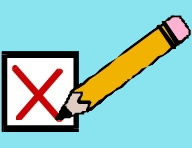
Electoral Register – Registration, Draft Register, Full Register
The Electoral Register is the single most important document in any election campaign. Without it you will not know who is eligible to vote, therefore to whom your campaign should be addressed. Electoral Registers are complied for each polling district separately.
The Electoral Register is compiled each year by your local authority, in county areas this is carried out by the district council. Each year, usually between August and October each local authority writes to every address in its area seeking confirmation of the names of the residents who are over the age of 18 or will be over the age of 18 during the forthcoming electoral year. The returns from this process are complied into the Electoral Register. Copies of the Electoral register are made available to all interested parties so if you serious about standing as a candidate and you notify the electoral registration officer of your intention s/he will supply you with copies, usually free of charge. Although in some areas elections are infrequent some district council elect ‘by thirds’. This means that a third of the seats are up for election in a four-year cycle. The fourth year of the cycle is the year the county council seat would be up for election, so in these areas voters go to the polls at least once a year. London Boroughs are completely different as they elect full councils once every four years.
The Draft Register is an interim document issued around December containing the electoral details of those people who have registered to vote by then. This is used by the Electoral Registration Officer to chase up those addresses from which there has not yet been a response to the original request for details. Some local parties use the draft register to see if their known supporters are registering in sufficient numbers. It is not unknown for parties to then target their own supporters with a request to register in time for those supporters to also be included in the Full Register, which is usually issued in February and which comes into effect at the end March. If this is not your first election and you have followed the procedures set our on this site, you should have a list of declared supporters and you can use the Draft Register as a tool to ensure that they register the following year.
The Full Register is usually made available each February and comes into effect at the end of each March. The Register contains the names and addresses of electors in a polling district. There will be a separate Register for each polling district in each council area.
The Format of an electoral register is such that there is a separate document for each Polling District. The order of the entries within each of these documents is discussed in Pollling Districts.Note: If, during the campaign, you find someone who should be registered to vote but isn’t they can still apply to join the register up to eleven days before polling day.
Continue to Manifesto....